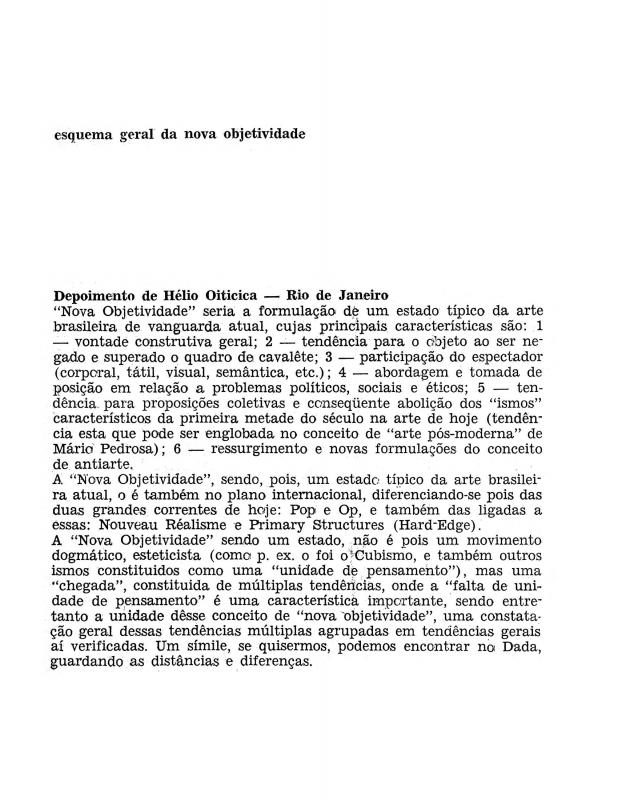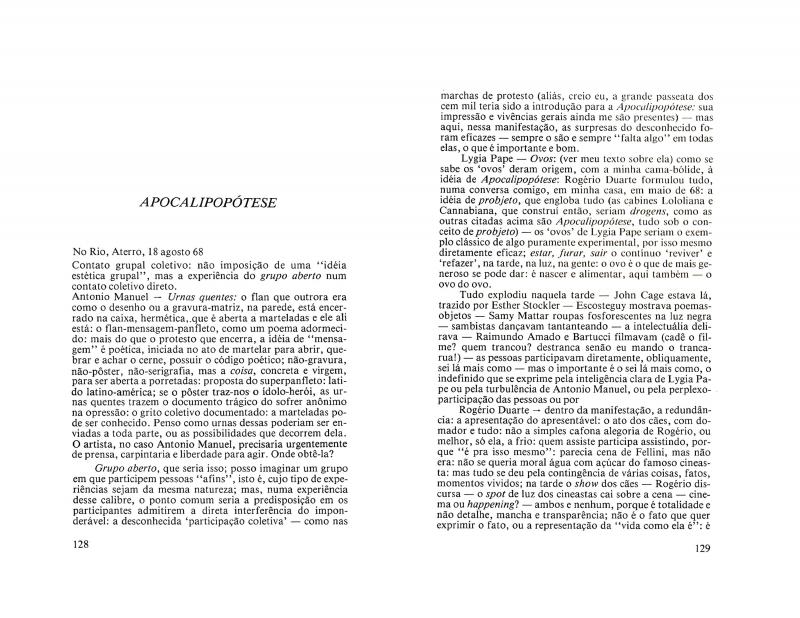This essay tells us all we need to know in order to understand the goal and purpose of the “Parangolé” series and, most particularly, the relationship between art and life that would be the defining feature of Hélio Oiticica’s entire subsequent body of work (including the Penetráveis series). Written months before the Nova Objetividade Brasileira exhibition, this essay is a harbinger of what he would discuss in “Esquema geral da nova objetividade” [doc. no. 1110372], his essay published in the exhibition catalogue for Nova Objetividade Brasileira—presented at MAM-Rio (Museu de Arte Moderna do Rio de Janeiro) in 1967.
Hélio Oiticica (1937–80) was a Brazilian Neo-Concrete artist. He started studying painting with Ivan Serpa in 1954 at the Museu de Arte Moderna do Rio de Janeiro. He later joined the Grupo Frente and the Neo-Concrete movement. In addition to his geometric paintings, which he worked on while he was studying with Serpa and was a member of the Grupo Frente, Oiticica produced performance and participatory art. His Parangolés (1964)—capes made with fabrics and recycled materials—were worn by the Mangueira Samba School during their performances. Oiticica also created immersive spaces, such as Nucleus (1959–60), which was an installation constructed from suspended painted wooden slats inspired by the Constructivism of Piet Mondrian. In 1967 Oiticica created the immersive environment Tropicália at the Museum of Modern Art in Rio de Janeiro. Tropicália was an installation consisting of rooms with plants and materials such as water, sand and stones, a parrot, a television set, and various other elements that were representative of Brazilian popular culture. The environment was designed to promote sensory stimulation. Oiticica applied the same principles to Eden, the installation he created in 1969 at the Whitechapel Gallery in London. The name Tropicália was used by Brazilian musicians to describe a new style that combined international music and pop with traditional Brazilian music. The term “Tropicália” was absorbed into popular Brazilian culture and came to signify a uniquely Brazilian essence. In 1970 Oiticica took part in the group exhibition Information at the Museum of Modern Art in New York.
Oiticica presented his multicolored capes at Apocalipopótese in 1968, and he and Rogério Duarte jointly authored an essay about the experience [see doc. no. 1110621]. Oiticica also wrote a review of the event at a later date, when he was in London [doc. no. 1110682], in which he explained its powerful impact on the development of his subsequent experimental works.



